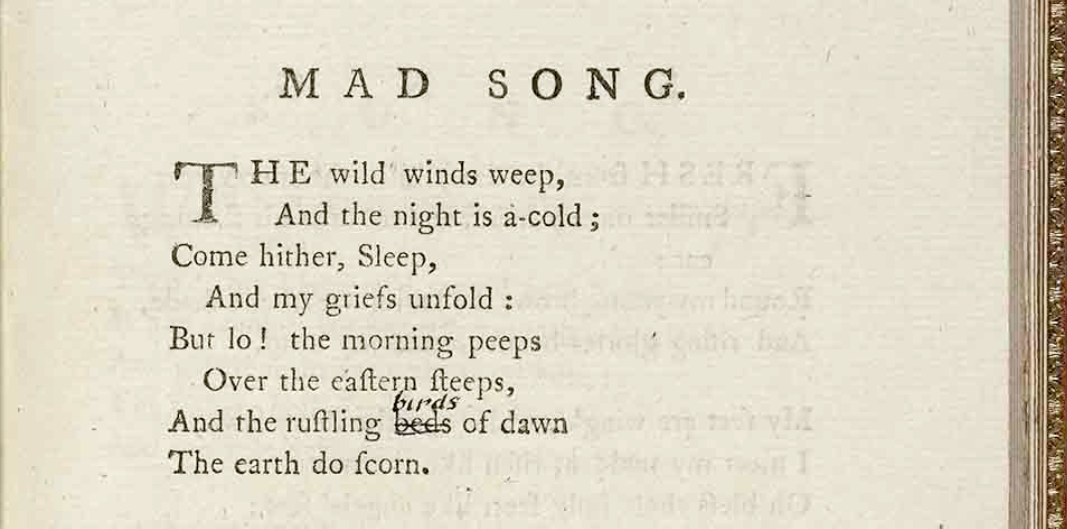For the past few months I’ve been tackling the 72-object Poetical Sketches, one of only two of Blake’s literary works printed using conventional typesetting (the other is French Revolution). Thanks to the previous work of Ali and Megan Wilson, my job as a “pre-proofer” has become much easier. The pre-proofing process involves checking the spacing and format of each object on various browsers (also known as deuglification); reviewing line notes for errors; verifying the inclusion of the original page numbers on each object (<physnumber>); adding more specific attributes for headers (ex. <texthead type=“title”>); and, of course, adding/modifying choice tags based on our updated tag set.
Although the members of BAND have gained more experience in dealing with typographical works, we still encounter interesting problems and questions that arise on a regular basis. For example, while working on the longest section of Poetical Sketches, King Edward the Third, I began adding choice tags with the <reg type= “abbrev”> to make it easier for users to find objects with specific characters’ names. (For example, Blake uses Dagw. for Dagworth, Aud. for Audley, Queen Phil. for Queen Philippa, etc.) This is the first time we see names of dramatic characters appear in an abbreviated form in Blake’s work. But when I encoded the abbreviated names in the BAD file, the display came out like this:
(object 38)


Why would there be a duplication of the names in <orig> and <reg> when all other <reg type> tags functioned normally? With the help of Laura’s “brain wave” during my office hours (most likely a stray emanation from Blake’s own genius), we tried some adjustments in the encoding and discovered that the problem was rooted in the <hi rend=”i”> (italics) tag placed around the choice tag. The new encoding places <hi> inside the <orig> tag:


Although the solution seems simple, we still have the option of updating the DTD to allow for <hi> around the entire choice tag. However, should we, as digital editors, italicize the editorial addition within the <reg> tag? And to return to the issue of choice tagging in general (particularly in Poetical Sketches, which includes many archaic forms of words that may not be as familiar to the casual user), should we “translate” conventional dramatic or eighteenth-century language into a similar, if non-equivalent, form for the search feature–and in the encoding itself? (For instance, should “seest” be altered to “sees”, “findeth” to “finds,” “faultereth” to “falters”, and so on?) Our priority, of course, is to preserve the integrity of Blake’s language, but to what extent should we rely on (as Blake might say) the intuition of our users? The line is not always clear, but the question makes for intriguing debates among digital editors and users alike.

